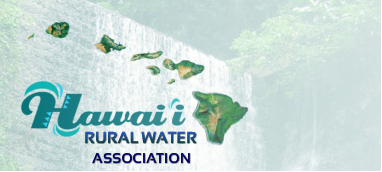Hawaii | 56th Annual HWWA and 2nd Annual HRWA Conference and Exposition
The Environmental Finance Center Network will be presenting two session at the 56th Annual HWWA and 2nd Annual HRWA Conference and Exposition on November 1 and 2. For more information, and to register, click here.
Presentation: Rates Survey and Rates Dashboard
Time: November 1, 10:00-11:00am
Description: The Environmental Finance Center, in collaboration with the Safe Drinking Water Branch of Hawai’i’s State Department of Health, has conducted the 2016 water rates survey of nearly all local government and other utilities in the state of Hawai’i. These rate sheets specify how utilities charge water customers for their water use. The participating utilities account for approximately 76 percent of all local government and other ownership type utilities in the state that charge rates, serving the vast majority of all customers served by public water systems. Customer bills are calculated across a spectrum of customer consumption rather than at one or two discrete consumption levels (e.g. the bill for 5,000 gallons/month). The results give insight to the rate setting objectives in place at a particular utility. For example, a utility might have particularly high bills at large consumption levels to encourage resource conservation or particularly low bills at small consumption levels to make the minimum level of services more affordable.
This session will explore the results and key findings from the statewide water rates survey. We will also demonstrate the Hawai’i Rates Dashboard, an online, interactive tool that allows utilities to compare their rates to other systems and to benchmark their financial performance against accepted standards. This is the first year that the dashboard tool has been available for systems in Hawai’i.
Presentation: Affordability of Water Service
Time: November 2, 10:00-11:00am
Description: Many water and wastewater utilities are considering ways to assist their low income customers. The options available to a utility differ depending on the state. This session will explore the legal barriers and opportunities to water and wastewater utilities establishing an assistance program for low-income customers in Hawai’i, for both governmental systems and for systems regulated by the Public Utilities Commission.
In addition, the session will demonstrate the Water and Wastewater Residential Rates Affordability Assessment Tool. The standard measure of affordability of water or wastewater service is comparing the annual water bill to median household income, also called percent MHI. This tool allows utilities to go beyond that measure to look at other indicators of affordability. The Excel-based tool guides a utility to obtain a range of Census data on its community in order to assess the relative affordability of its water & wastewater rates on its residential customers using multiple metrics. This provides the utility with more information and a more comprehensive understanding of the affordability of its rates than based on %MHI. Affordability is assessed for the average customer, low-income customers, and a full range of households based on their various income levels, both all households and only homeowners. The tool also allows a utility to compare two rate structures side-by-side, enabling the utility to assess the affordability of its current rates alongside alternative rates.
CEUs: Both Sessions have been approved for .1 Drinking Water CEUs
Presenter: Glenn Barnes, Associate Director – Environmental Finance Center at University of North Carolina at Chapel Hill
Who Should Attend:
These sessions are designed for water systems serving 10,000 or fewer people (though systems of any size may attend), especially targeting local government systems facing financial challenges. Owners of privately owned systems, consultants and technical assistance providers serving water systems are also invited to attend.
Partners:

